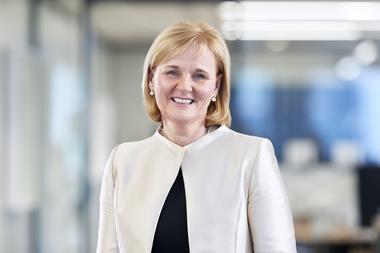The latest findings from Citizens Advice has highlighted that bias is ‘baked’ into underwriting processes, meaning insurers ’are now on the back foot’
The relationship between ethnic minority groups and insurers faced further scrutiny in March 2022 following research from charity Citizens Advice, which revealed that people of colour paid more for their car insurance in 2021 compared to white drivers.
Dubbing this the “ethnicity penalty,” the year-long study, which analysed 18,000 car insurance costs reported by people who came to the organisation for debt help, found that on average, people of colour paid £250 more a year than white people for car insurance.

This insurance ethnicity penalty is nothing new, however.
Back in 2016, a report commissioned by personal injury law firm Thompsons Solicitors, published by data organisation Webber Phillips, echoed a similar sentiment. This found that ethnic minorities were paying up to £450 more per year for their car insurance compared to other demographics.
Kishan Mangat, co-chair of the Insurance Cultural Awareness Network (Ican) told Insurance Times: “I wouldn’t be surprised if [the Citizens Advice report] caused people from an ethnic minority background to question the industry.
”The research highlights that insurers are now on the back foot and they are being challenged to be able to demonstrate that there is no bias when it comes to their pricing strategies.”
Mangat disagreed, however, that the research highlighted a lack of engagement between insurers and ethnic minorities.
She continued: “We would invite insurers to be more transparent about their algorithms and underwriting policies at a granular level and to engage the services of Ican and other networks in the market to help pricing transparency.
“We need to be aware that as we are moving towards more automated decision-making that we need to better understand the ways we can eliminate bias in the insurance industry’s algorithms.
”Data scientists, pricing analysts, distributors and underwriters all need to be aware of the fact that there is bias baked into their system.”
For Mangat, this bias should be tackled by firms adopting an inclusion and equity focus tool, especially as “representation at the top within many of the large insurers doesn’t necessarily represent the population as a whole”.
She emphasised ”that race and ethnicity cannot be ignored by the industry anymore”.
Building trust through education
Part of the problem surrounding the ethnicity penalty is the lack of education as to what the insurance industry is actually about, noted Mary Alade, chief strategy officer at Aon.
For example, the banking sector utilises daily communication touchpoints with its customers - something the insurance sector has yet to action.

Alade therefore believes that Citizens Advice’s research findings “almost supported what [some ethnic minorities] perception [of insurance] is”.
She continued: “Education and trust go hand in hand - what people don’t know is hard for them to trust. If one person has a bad experience with insurance - with say a refusal to pay a claim - the thing with ethnic minorities is that they are very community orientated, so news and bad experiences are spread quite quickly.”
Ola Jacob, broker success manager at FloodFlash and a member of Ican, agreed that education and trust were key to tackling the ethnicity penalty.
“The policies that ethnic minorities do buy might not cover them for what they need, then they might not be able to make a claim – this then compounds their bad experiences with insurance, he said.
”The older generation haven’t engaged with insurance, but the younger generation are savvier and more educated - they can see how it benefits them.”
One way to boost engagement with insurance is through the use of embedded insurance, Jacob added. This could include, for example, offering insurance transparently alongside purchases or money transfers.
Alade, meanwhile, recommended the use of social media as a communication and education tool.
Social economic mobility
The ethnicity penalty in insurance could also be linked to other social factors, according to Mangat.

“If you are Black, Asian and minority ethnic (Bame), you will be charged more for insurance, but at the same time it’s linked to areas of high deprivation, lower social economic mobility [and] high crime rates. I don’t think [this] can be ignored,” she explained.
Alade agreed with Mangat’s stance, based on what she has seen through her ongoing work with statutory non-departmental public body the Equality and Human Rights Commission. She questioned whether ethnic minorities have enough disposable income to pay for insurance premiums.
“If ethnic minorities do have enough disposable income, but are being charged more premium, then it’s not fair,” Alade said.
This demographic being charged more for insurance could additionally lead to increased instances of underinsurance, Jacob added. This is already “a problem” within “traditional insurance”.
Under-representation
Bame representation within insurance firms themselves could also contribute to the ethnicity penalty. Jacob explained: ”If there is ever an ethnic minority customer and I am on the phone, then the chances of us selling goes through the roof. They trust me more.”
This is a problem Alade has experienced first-hand.
She said: “In my first role, I was one of two black women out of a 300-strong company – this was the same sort of demographic all throughout my career.
“When I got to Aon, I had progressed enough in the industry to understand what the challenges were. There needed to be a bridge between the industry and the talent it was trying to attract.”
With this realisation in mind, Alade conducted a pilot scheme pre-pandemic, providing workshops at Aon for Bame individuals, educating them about careers in insurance.
Aon’s Bame employee intake has increased to 39% because of initiatives such as this.
What is the ethnicity penalty?
The ethnicity penalty refers to ethnic minority individuals paying higher insurance premiums than their white counterparts, as found by research conducted by Citizens Advice, which was published in March 2022.
The FCA has a responsibility to ensure insurance customers are treated fairly. In 2018, it warned insurers that using data linked to protected characteristics could discriminate against consumers.
How can the industry boost ethnic minority representation?
Despite acknowledging that the insurance industry has a long way to go in terms of conquering the ethnicity penalty, Mary Alade, chief strategy officer at Aon, thinks the broker has made massive strides to increase the representation of ethnic minorities in insurance.
Speaking about her Nigerian culture, Alade told Insurance Times that parents from this region expect their adult children to be successful.
She said: “How do we set realistic expectations for our ethnic minorities when it can take them a long time to progress and find the right balance between their ambitions and the organisation’s progression path?”
For this reason, Alade believes the common industry narrative around individuals “falling into an insurance job” needs to be changed to “I have made an intentional choice” about career trajectory.
Staff retention is also an issue.
Alade said: “Once you get ethnic minorities in, you don’t want [them] to leave after the graduate programme. The thing with the industry is that [firms] fish from the same pool. What does progression look like for a young black man or woman?”
She credited leaders like Dominic Christian, global chairman of reinsurance solutions at Aon UK, as helping to drive change here.
“If the organisation does not know [what to do], the best thing [it] can do is empower people - that’s what Aon did for me. Create safe spaces and give people what they need” to affect change Alade added.
Source
Hosted by comedian and actor Tom Allen, 34 Gold, 23 Silver and 22 Bronze awards were handed out across an amazing 34 categories recognising brilliance and innovation right across the breadth of UK general insurance.




















































No comments yet